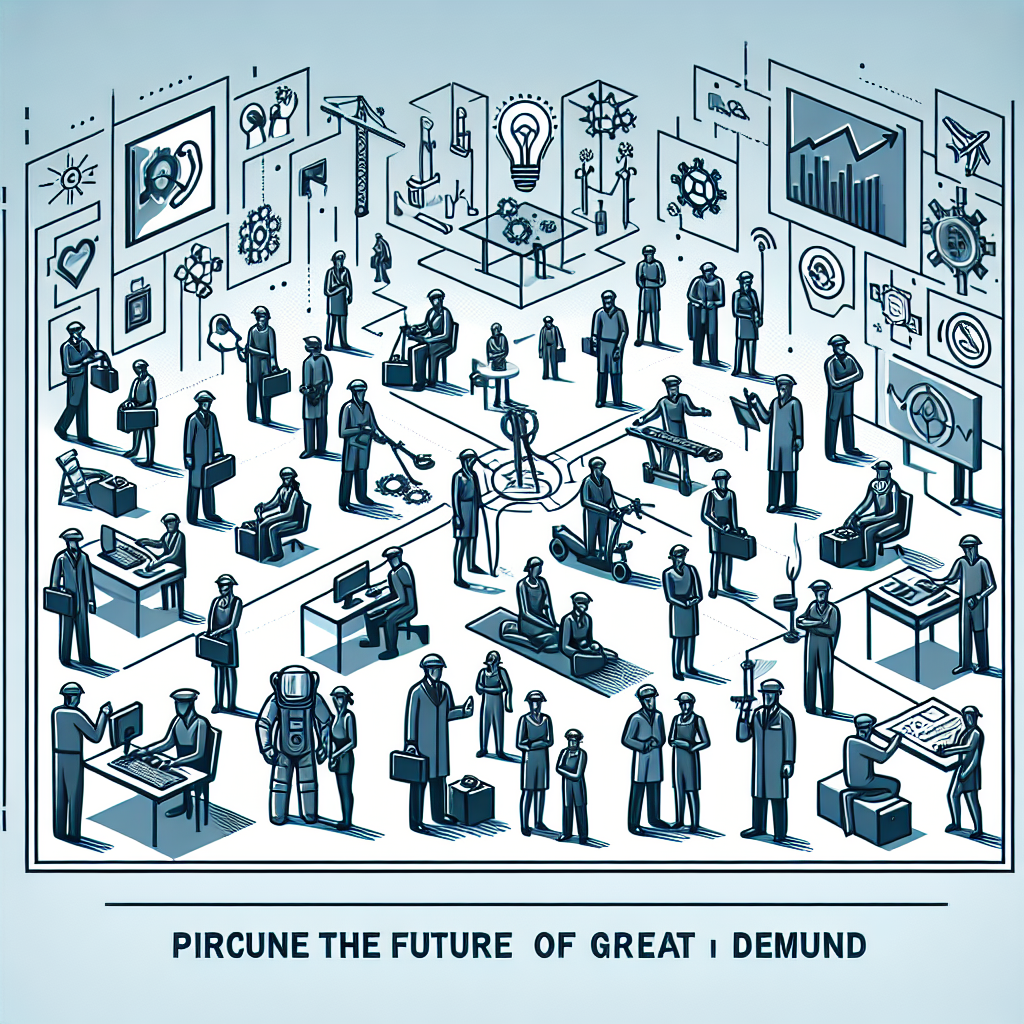The Future of Jobs In Great Demand: What To Expect. The next decade will reshape which roles employers prize most, blending technology, demographics, and sustainability concerns into new career winners. This article examines the structural forces driving demand, highlights sectors likely to expand, and offers practical guidance for students, mid-career changers, and hiring managers preparing for evolving labor market needs.
Why demand for certain jobs is rising
Several macro trends are converging to push demand for specific occupations. Aging populations require more healthcare and eldercare services. Rapid advances in artificial intelligence, machine learning, and automation increase the need for technical specialists as well as professionals who can oversee, interpret, and govern automated systems. Climate policies and corporate sustainability goals are creating a growing market for green energy and environmental expertise. Finally, globalization and remote work models change where and how talent is sourced, making skills portability and digital fluency increasingly valuable.
Key drivers to watch
- Demographic shifts: aging societies increase demand for healthcare, social services, and geriatric specialists.
- Technology integration: AI, data science, cybersecurity, and cloud computing remain central to many industries.
- Climate and energy transitions: renewable energy, energy storage, and environmental remediation skills are expanding.
- Regulation and compliance: as new technologies emerge, expertise in ethics, law, and risk management grows in importance.
Projected high-growth sectors and roles
While precise forecasts vary by country and region, several sectors consistently appear in projections of future growth. Healthcare occupations — from nurse practitioners to home health aides — will expand as medical care demand rises. Technology roles such as data scientists, AI engineers, and cybersecurity analysts will continue to be in strong demand across industries. Green economy positions, including renewable energy technicians and sustainability managers, are emerging as stable, long-term career paths. Additionally, skilled trades such as electricians and HVAC technicians will remain essential as infrastructure investments accelerate.
Skills that increase resilience in the job market
Employers are increasingly looking for a blend of technical capability and human-centered skills. The most resilient workers combine:
- Technical literacy: familiarity with data tools, automation platforms, and basic coding concepts.
- Analytical thinking: the ability to interpret complex information and make evidence-based decisions.
- Interpersonal strengths: communication, collaboration, and emotional intelligence that machines can’t easily replicate.
- Adaptability and lifelong learning: rapid reskilling and comfort with changing role definitions.
How students and job seekers can prepare
Preparation is both strategic and practical. Choose educational pathways that emphasize transferable skills and offer experiential learning. Seek internships, project-based courses, and cross-disciplinary programs that mix technical training with communication and teamwork. For those still in college, using specialized job boards and career resources can help match emerging interests to employers actively hiring for growth roles; for a curated overview of platforms suited to students in the United States, see this ultimate guide to job boards for college students in the USA — free and paid options.
Practical steps for career development
- Map your skills against industry needs and identify gaps to fill with targeted courses or certifications.
- Build a portfolio of projects that demonstrates applied skills—especially for technical and creative roles.
- Network intentionally: connect with professionals in growth sectors through mentoring programs and industry events.
- Prioritize roles and industries that match both near-term demand and your long-term values.
Policy, employers, and the role of education
Governments and educational institutions play a crucial role in smoothing transitions. Public workforce programs, apprenticeship models, and partnerships between colleges and employers can create talent pipelines aligned with market needs. For a data-driven perspective on national employment trends and projections, consult the Bureau of Labor Statistics’ employment projections summary on growth patterns and occupational shifts.
Bureau of Labor Statistics employment projections — analysis of expected occupational changes
Balancing short-term demand with long-term development
Employers should invest in internal training and clear career pathways to retain talent as roles evolve. Candidates must balance chasing immediate openings with developing foundational skills that will enable adaptability. Ultimately, careers that combine technical proficiency, creativity, and human-centered judgment are most likely to thrive.
As you plan next steps—whether choosing a major, reskilling, or hiring—focus on durable capabilities and evidence-based information about labor market trends. The future will reward those who can learn continuously and apply expertise in collaborative, ethical, and context-aware ways.
Quick takeaways
- High-demand fields will include healthcare, AI and data roles, cybersecurity, renewable energy, and select skilled trades.
- Combine technical knowledge with communication and adaptability to remain competitive.
- Use targeted resources and partnerships to gain experiential learning and entry into growing occupations.
FAQ
Q: Which degree fields are most future-proof?
A: Degrees that blend technical skills (computer science, engineering, data analytics) with communication, ethics, or business perspectives tend to be more resilient than highly narrow training alone.
Q: How quickly should I reskill if my job is at risk from automation?
A: Start as soon as possible—prioritize short, high-impact certifications and project-based learning that demonstrate new capabilities. Employers value demonstrable skills over time spent in programs.



